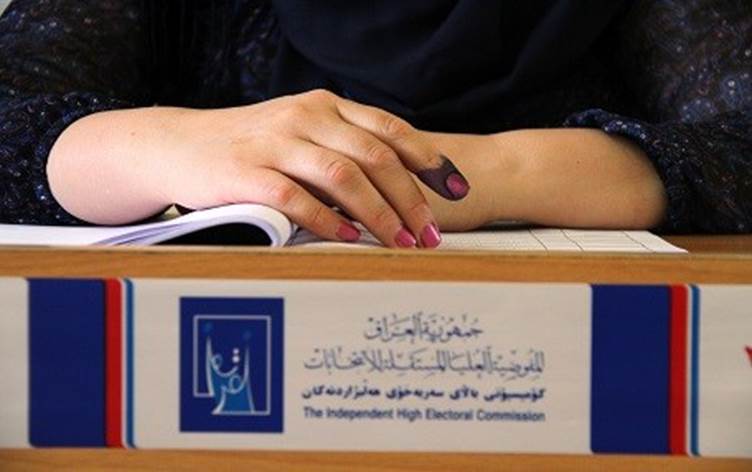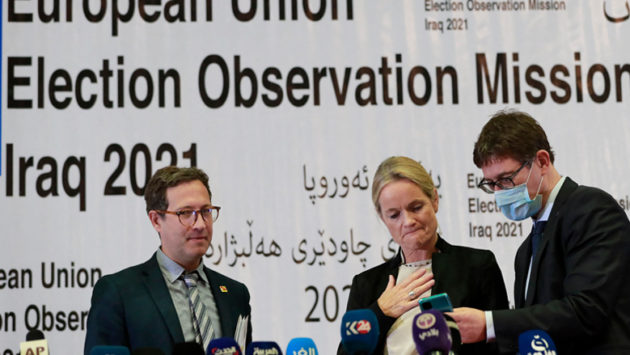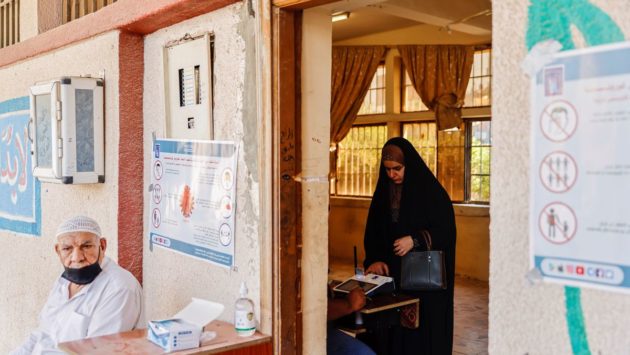Shams Network Report to Monitor the Elections of the Parliament Biometric Registration Process for Voters
An overview of the biometric registration process:
The right of all adult citizens to participate in the affairs of their government is the cornerstone of any true democracy, and voting in free and fair elections is perhaps the essential aspect of democratic practice. In order for individuals to exercise their democratic right to elections, there must be a comprehensive and general electoral register, called “the list or register of voters”. This list should be well and continuously updated to ensure that the name of every citizen entitled to vote is registered to vote, and only once.
Voter registration is the primary process that determines who is entitled to vote. This process varies widely from a country to another. In some countries, voters automatically become registered when they reach voting age or when they move to a new place of residence. This type of registration is known as passive voter registration. In others, voters have to take certain steps to register. This type of registration is known as positive voter registration. Anyway, however different voter registration processes may be, the government must provide eligible voters with a fair opportunity to see what is going on. The government should also ensure that citizens are given a reasonable opportunity to complete or update the stages of their registration. In addition, the responsible body must inform voters in advance of where and when their information is registered or updated in the voter register.
The concept of biometric registration:
Biometric registration of voters uses the voter’s physical characteristics, such as facial features or fingerprints, to identify them.
The most common features that are captured are facial features and fingerprints. Retinal and iris recognition systems have not yet been widely used for elective symptoms.
The importance of voters registration
The voter’s registration process has three objectives:
- It gives eligible citizens a real opportunity to vote.
- It prevents unqualified people from voting.
- It prevents multiple voting.
Difficulties with voters registration
When making decisions regarding voters registration, election administrators must take into account the specific circumstances of their country, region or region. Among the difficulties they face there are:
- Whether it is necessary to create a new list of voters for each electoral process, or is it better to adopt a permanent register that is updated periodically?
- How can eligible voters prove their true identity at the polling station? Do they have to use a voter ID card or use another method?
- If a voter identification card is used, what information should be written on the card?
- Is registration compulsory or optional?
- If the registration is voluntary, is it on the initiative of the citizen himself or on address of the government?
- How can local conditions (literate rate, urbanization, population movements, well-being, and the history of democracy) influence the choice of voters registration system?
- What role can the computerization system play in the voters registration process?
The voter’s registration process can be conducted on a temporary basis for specific elections only or on a permanent basis, with the possibility of a periodical update, or through a continuous updating process. Temporary registration happens less frequently, with the exception of elections in a post-conflict period, which often take place with temporary voters registration. However, there are exceptional cases even in well-established democracies, where the permanent register of electors has recently been prepared.
In addition to this, voter registration may be forced or voluntary for citizens. Compulsory voters registration is very common in Western Europe and in Central and Eastern Europe as well. This is organized in countries on an ongoing basis, where the voter is automatically registered in the voter’s list after reaching 18 years of age, without a requirement to appear before any public authority. This system is based on individual citizenship and age information, obtained from the civil registry or population lists compiled at the local government level.
The permanent voter’s register is updated either on an ongoing basis or over specific periods of time, usually during the period immediately preceding an early election. Continuous registration requires the existence of the appropriate infrastructure to maintain the registration either in the electoral administration or in the civil registry. This involves adding the names and other relevant information of those who meet the eligibility requirements (citizenship, satisfying residency requirements, reaching voting age) and deleting the names of those who can no longer meet the eligibility requirements (usually due to death and change of residence). Continuous registration is used to a greater degree than periodic registration in all regions of the world, despite the complex mechanisms required and the high costs incurred. It is important to note, though, that voter registration through periodic voter registration is ultimately a more costly process than maintaining an ongoing register.
Biometric registration of elections and the principle of “one person, one vote”
Many countries are still facing difficulties in registering and certifying voters.
They are measuring the negative effects of this on their democratic process.
In fact, over the past ten years or so, the use of biometric registration and electronic voting systems has become more widespread. The aim is to ensure equality among the electors, on the basis of the principle of “one voter, one vote”, in other words, that each person’s vote must be equal.
Elections remain a state of great tension in many countries, from demonstrations and confrontations to extreme violence.
Solutions that make it possible to improve the electoral process with the consent of the various political forces are the democratic progress of the country.
Biometrics for elections: it has two primary goals
- It makes it possible to compensate for the lack of a voter identification mechanism.
- it ensures cancellation of multiple registrations on voters lists
A proven and accessible global approach
Step 1: Make electoral rolls secure with a registration solution.
The first step is to implement a computerized voter registration system.
This first step involves a process known as registration.
Civil and biometric data of all voters is collected and stored securely. This data forms the backbone of a national database that reflects the country’s electorate.
Step 2: Make the lists authoritative with an automatic deduplication solution.
The second step ensures central consolidation of registration data, removal of duplicates using an automated biometric identification system (ABIS), temporary list printing, and dispute and claims management.
Step 3: Make voices more secure with an authentication solution.
The third step in a credible, fair, and transparent electoral process is to certify voters, thus ensuring that their right to vote is exercised in complete safety.
Securing the electoral register to support the establishment of a modern state
Securing the biometric voter’s register supports the establishment of a modern state through:
- Issuance of legal documents that provide unique evidence of the identities of voters, as well as the right to exercise their right to vote in an electoral system that is free from error and fraud.
- Access to simplified administrative procedures.
- Improving the management of people on the territory of the state.
- Restoring the bonds of trust between citizens and government authorities at the regional and national levels.
- All this to encourage the emergence of a modern state with national and international reach.
- Better identification of voters based on biometric data.
- Reliability in detecting duplicates.
- The credibility of the electoral register, which ensures that voters are only included once and that seats are distributed in a neutral manner in proportion to the votes cast by voters in the electoral district.
- Confidence of partners and politicians participating in the electoral process.
- Ensuring everyone’s free participation in voting.
- Provide transparency assurance thanks to verification tools.




